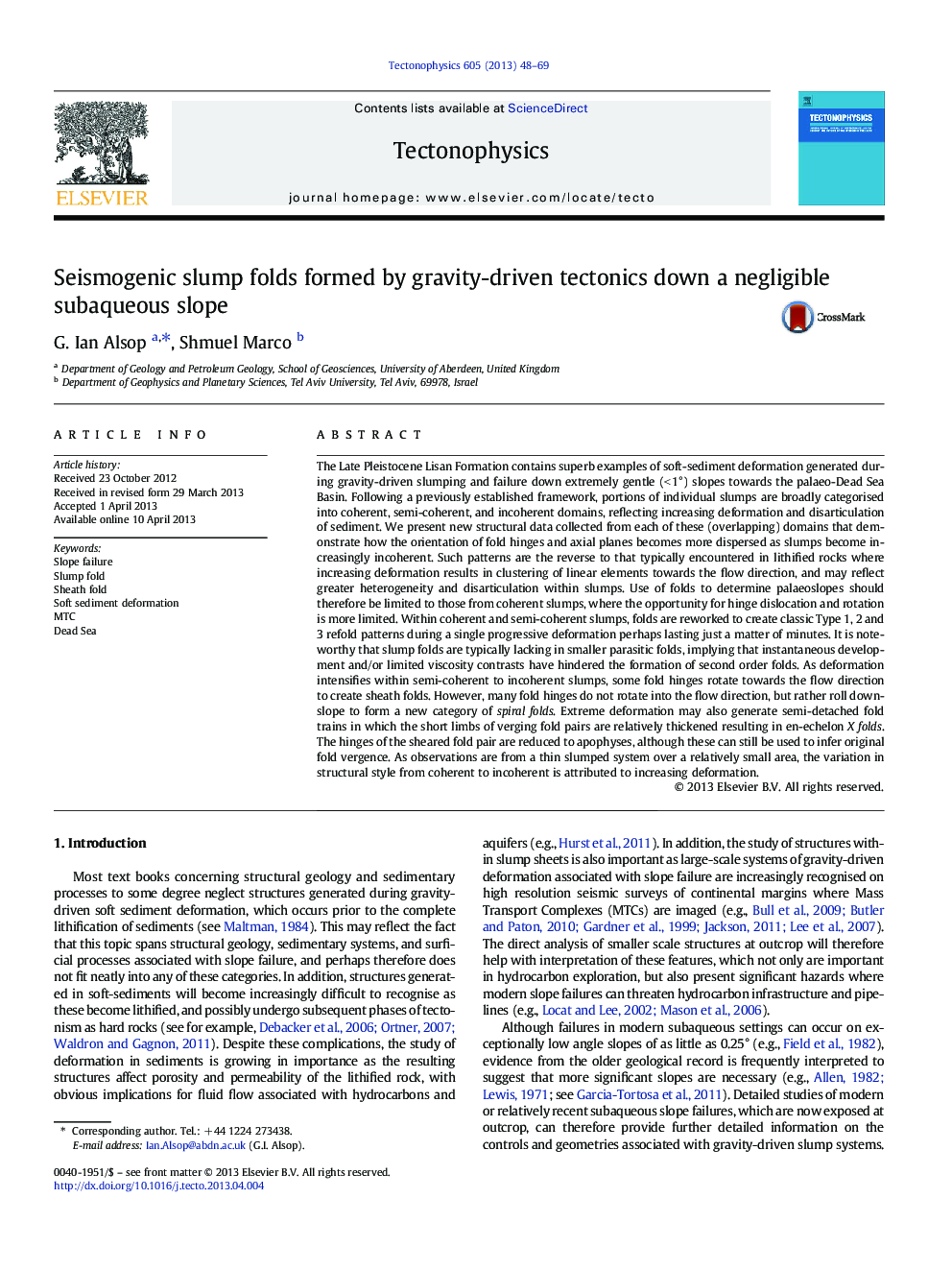| کد مقاله | کد نشریه | سال انتشار | مقاله انگلیسی | نسخه تمام متن |
|---|---|---|---|---|
| 4692175 | 1636782 | 2013 | 22 صفحه PDF | دانلود رایگان |
• Gravity-driven seismogenic slumps develop on slopes around the Dead Sea Basin.
• Failure and slumping occur on exceptionally low-angle (< 1°) subaqueous slopes.
• Increasing deformation leads to fold hinge dispersal as slumps become incoherent.
• Progressive deformation in a single slump can create classical refold patterns.
• First account of “spiral folds” and “X folds” that are formed during slope failure.
The Late Pleistocene Lisan Formation contains superb examples of soft-sediment deformation generated during gravity-driven slumping and failure down extremely gentle (< 1°) slopes towards the palaeo-Dead Sea Basin. Following a previously established framework, portions of individual slumps are broadly categorised into coherent, semi-coherent, and incoherent domains, reflecting increasing deformation and disarticulation of sediment. We present new structural data collected from each of these (overlapping) domains that demonstrate how the orientation of fold hinges and axial planes becomes more dispersed as slumps become increasingly incoherent. Such patterns are the reverse to that typically encountered in lithified rocks where increasing deformation results in clustering of linear elements towards the flow direction, and may reflect greater heterogeneity and disarticulation within slumps. Use of folds to determine palaeoslopes should therefore be limited to those from coherent slumps, where the opportunity for hinge dislocation and rotation is more limited. Within coherent and semi-coherent slumps, folds are reworked to create classic Type 1, 2 and 3 refold patterns during a single progressive deformation perhaps lasting just a matter of minutes. It is noteworthy that slump folds are typically lacking in smaller parasitic folds, implying that instantaneous development and/or limited viscosity contrasts have hindered the formation of second order folds. As deformation intensifies within semi-coherent to incoherent slumps, some fold hinges rotate towards the flow direction to create sheath folds. However, many fold hinges do not rotate into the flow direction, but rather roll downslope to form a new category of spiral folds. Extreme deformation may also generate semi-detached fold trains in which the short limbs of verging fold pairs are relatively thickened resulting in en-echelon X folds. The hinges of the sheared fold pair are reduced to apophyses, although these can still be used to infer original fold vergence. As observations are from a thin slumped system over a relatively small area, the variation in structural style from coherent to incoherent is attributed to increasing deformation.
Figure optionsDownload as PowerPoint slide
Journal: Tectonophysics - Volume 605, 11 October 2013, Pages 48–69
